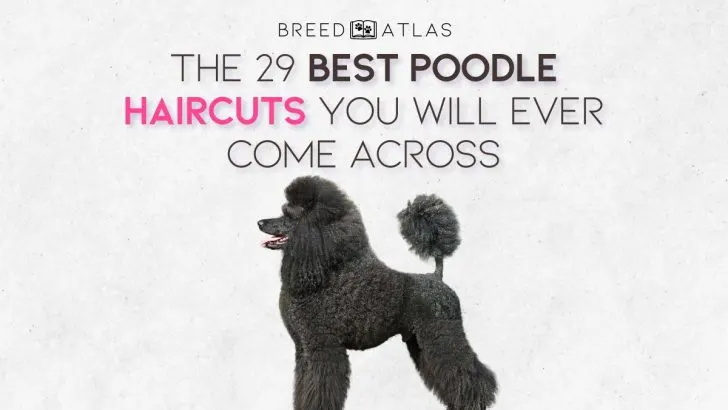Poodle lovers and Poodle owners unite – today we are talking about your favorite breed. Even if you do not own a poodle, you have to be familiar with at least one of the many different Poodle cuts popular today.
What you might not know is why and how Poodles started getting those fabulous haircuts in the first place.
Poodles originated in medieval Germany as duck-hunting water dogs. In that era, they had unusual haircuts out of occupational necessity.
With the bottom half of its body shaved, the Poodle was able to float and could swim more freely. The dense coat around the chest and neck was kept to keep the dog’s vital organs warm in the freezing water.
When it comes to the fur around the joints, it was kept hoping it would protect against the cold and injury, at the same time helping to prevent rheumatism. The fur around the face was shaved so the dog could fulfill its retrieving task more easily.
Today the cuts are kept mainly for fun and the dog shows. The American Kennel Club (AKC) allows four cuts in the show ring:
- Puppy cut
- English saddle cut
- Sporting cut
- Continental cut
But many more fun haircut options exist for Poodle’s coat and we are going to cover them all today! Let’s dive into the interesting world of various looks for these amazing dogs.
1. Puppy Cut
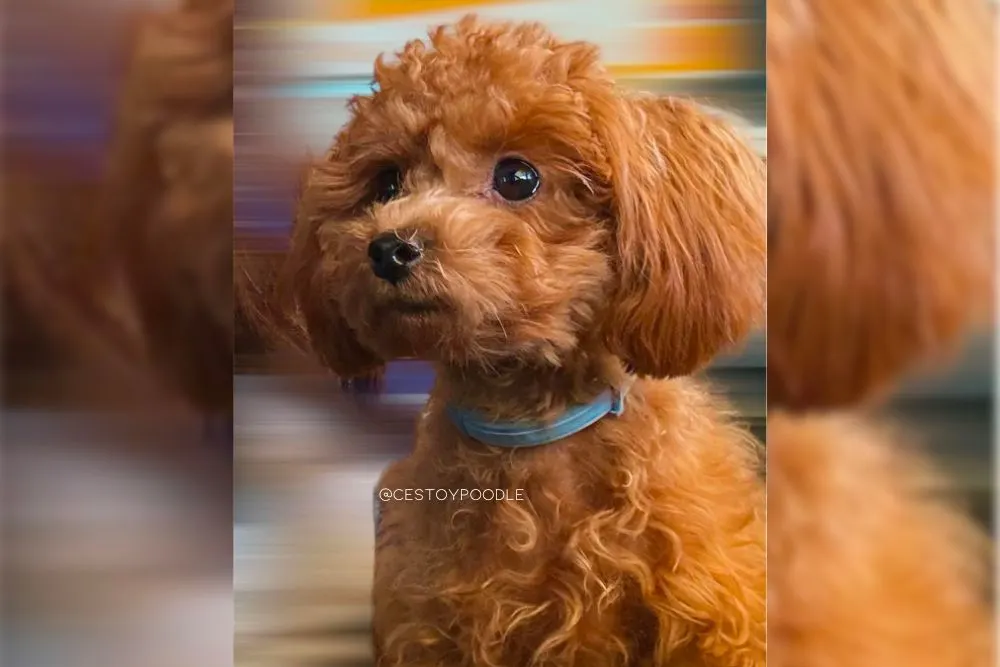
This is one of the easiest Poodle cuts and requires just the basics of Poodle grooming knowledge. This is a good option for newcomers to Poodle grooming and it is one of the most popular cuts for Poodles aged 12 months or younger.
The puppy clip means the dog has the fur clipped evenly all over. The face, tail, and feet should be shaved. The puppy cut is the perfect style to maintain a young Poodle’s wavy and soft fur before it becomes the curly adult coat.
Many pet owners prefer the puppy cut, as it allows for the Poodle to have full coverage over the body, without exposing any skin.
When the skin is fully exposed it is subjected to the sun. That means the Poodle can develop possible sores from playing around in the yard or when exposed skin is resting against carpeting or similar surfaces.
This style is usually not suitable for older dogs. The American Kennel Club allows this clip only for Poodles aged under twelve months.
2. English Saddle Cut
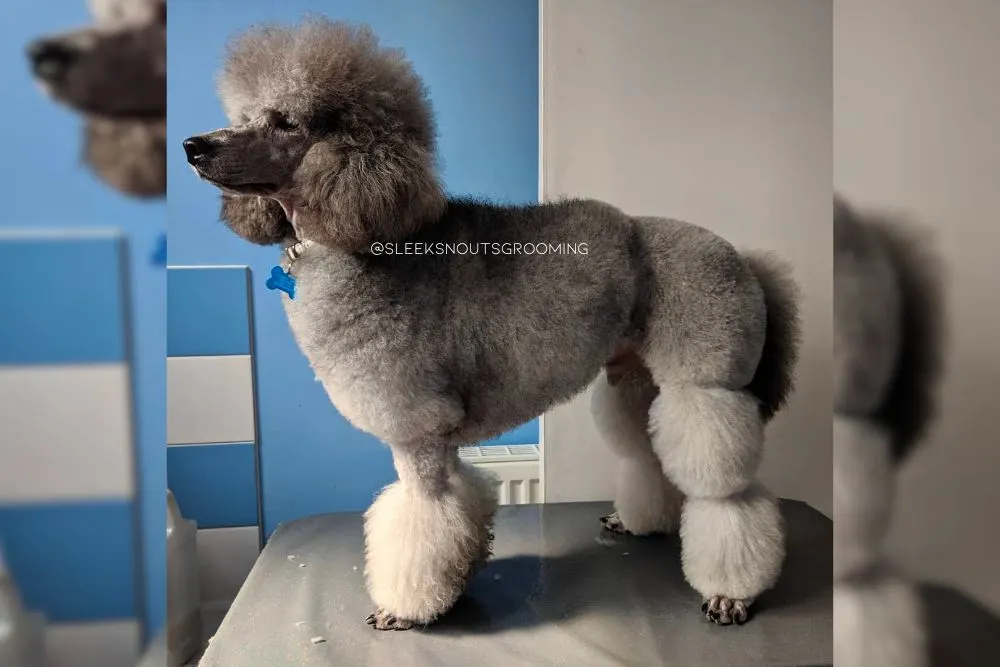
The english saddle cut was more often seen in the 50s and 60s than it is today. In 1956 at a dog show at Westminster, Annie Rogers Clark became the first woman to win Best in Show with her Toy Poodle in this cut.
In this clip, the Poodle’s face, front leg between the knee and foot, a curved area on the side, the base of the tail, spaces between the foot and ankle on the back legs, and the paws are all shaved closely.
The fur on the back is left longer and shaped with scissors. The hair on the top of the head is left long and tied back.
The fur on the front legs is also kept long. The fur over the hips and sides is trimmed shorter into a smooth layer.
The hair on the tail is kept long and shaped into a ball. The fur on the back legs is rounded and evenly spaced.
The fur on the bottom of the leg starts just above the ankle and ends above the feet. The trimming starts at the knee area and ends about half an inch or an inch above the lower leg, depending on the size of the poodle.
The cut lost its popularity due to many groomers’ opinions that it didn’t flatter most dogs and had many structural shortcomings.
Because of the high level of maintenance like daily brushing and comb work, this cut is not the most popular choice with pet owners and is mostly reserved for show dogs.
3. Sporting Cut
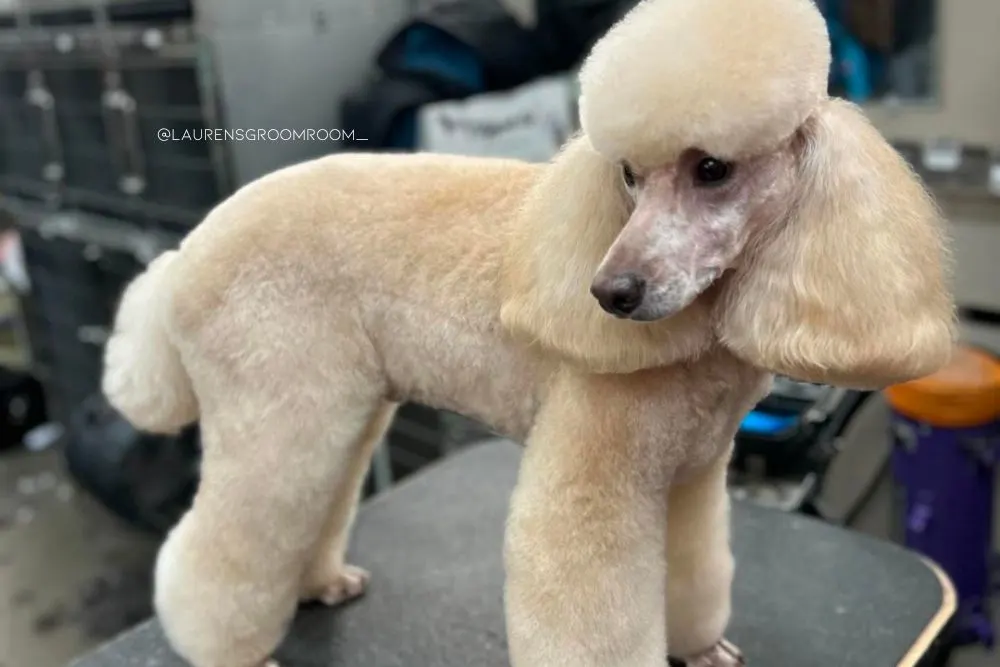
The sporting clip is most popular in the UK. This haircut requires the face, feet, throat, and base of the tail to be shaved close, leaving a scissored cap on the top of the head.
The legs and the remainder of the dog’s body should be clipped or scissored to closely follow the outline of the dog. That means that a short blanket of fur about one inch long should be present in that area.
The fur on the dog’s legs may be a bit longer than the fur on the body. The tail of the dog should have a fluffy, nice pom pon at the end.
4. Continental Cut
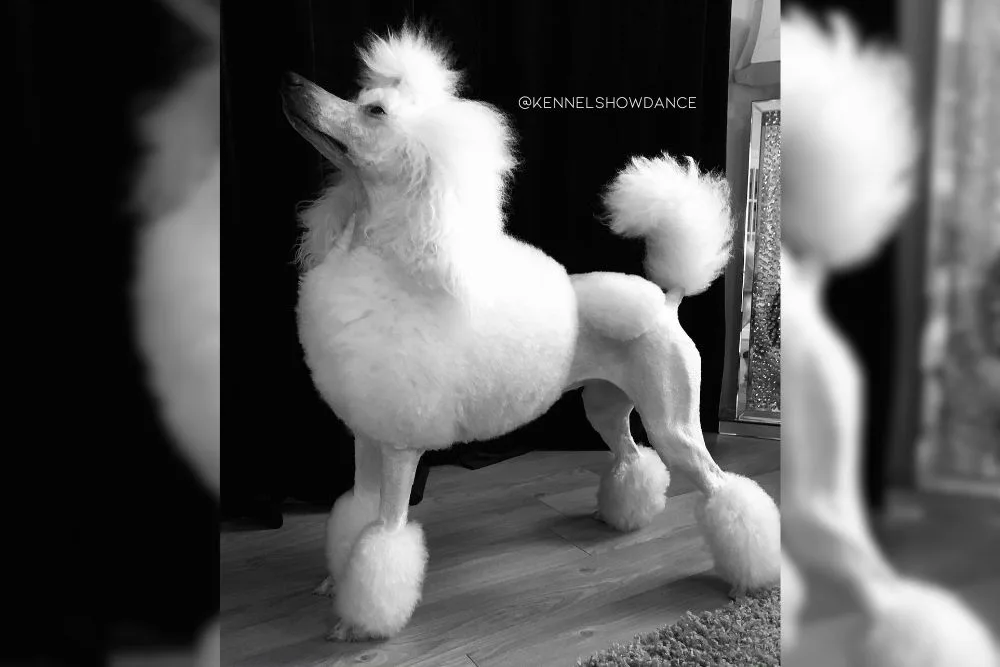
This Poodle haircut is what most people imagine in their head when we say Poodle.
This cut requires the fur on the face and the fur on the part of the front and hind quarter to be shaved very closely. The exceptions are the hip rosettes, feet, and the base of the tail.
The pack area of the dog is left very long and it’s scissored into shape. The fur on the top of the head is quite long and pulled into a ponytail. On the dog’s tail, we can find a very large pom pon.
The pom pons on the legs are located just above the wrist and hock joints and they end above the feet. They must be scissored in a round shape. Hip rosettes are placed directly over the hip joint of the dog.
Depending on the variety of the poodle they can be half an inch or an inch apart, also made into a round shape.
5. Modified Continental Cut
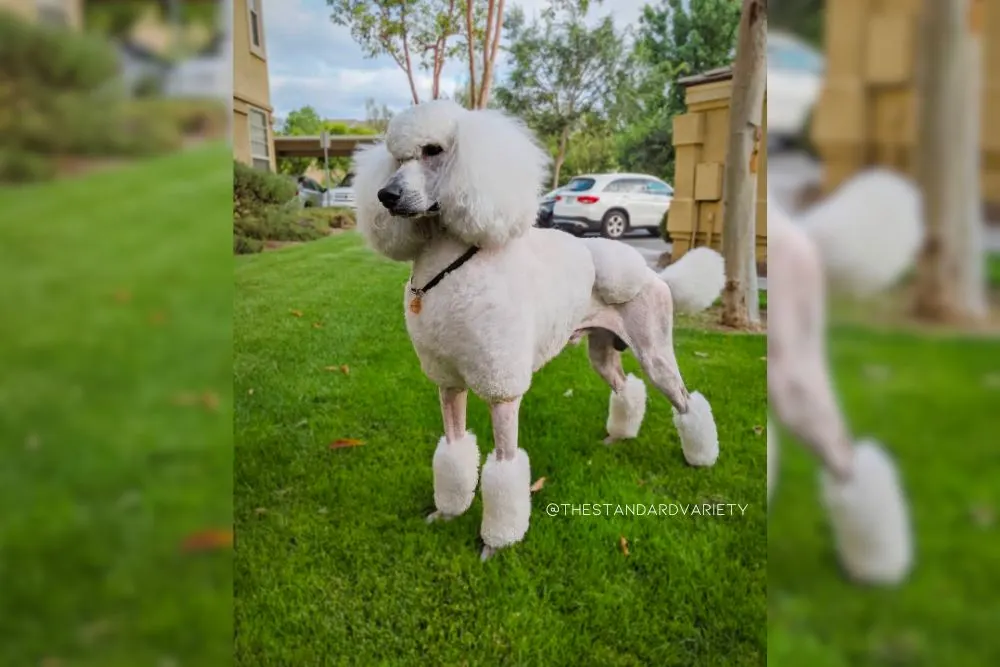
This is a cut that is also allowed in the show ring according to the American Kennel Club. However, in the rule book, you will only find the standard Continental mentioned.
The reason AKC allows this cut in AKC conformation is that there is only one element that is modified. That would be the hip rosettes. In this cut they are optional.
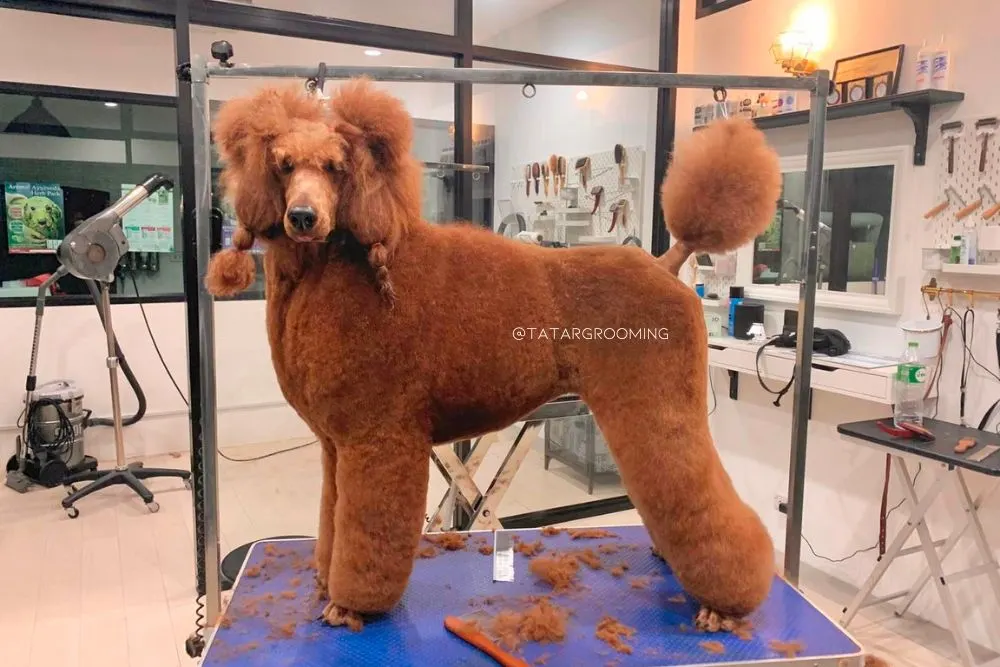
Even though it is not accepted as a standard AKC Poodle cut, this one is very popular throughout Europe. Mostly seen in the countries of Scandinavia (Sweden, Norway, Denmark, Åland Islands) and France, Italy, and Germany.
People involved in the Poodle world often refer to it as the second puppy clip or as a T-cut.
The hair on the top of the head may be left puffed out or it can be pulled into a topknot. The coat can be very low on the dog’s legs, just showing a small part of the paw.
Only the feet, face, and tail have short hair, everything else is fluffy and long, but it still must be styled.
This hairstyle is known as one of the low maintenance Poodle cuts, but the coat can grow quickly causing the cut to lose shape.
7. Kennel Clip
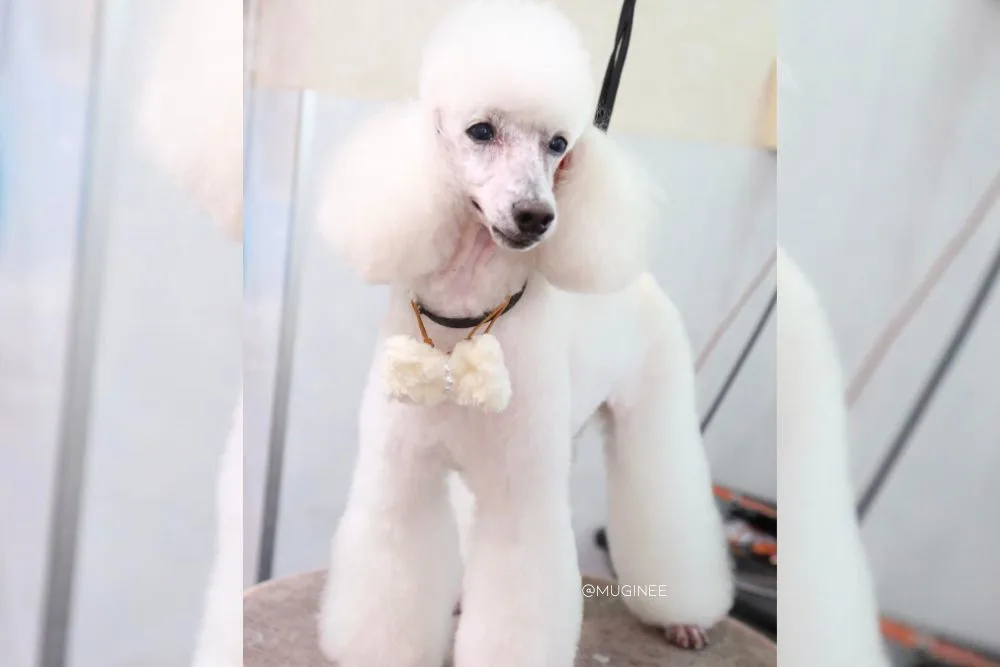
This haircut is known as the pet clip. That means that most pet owners decide on this easy cut.
If you want your dog to rock the kennel cut, the tail, and the top knot are left longer than the rest of the fur. The feet, the base of the tail, and the face are shaved in a short cut.
The rest of the body fur is just scissored into shape. The length of it is completely up to the poodle owner. Usually, the cut is a shorter length during the summer and longer in the colder months of the year.
8. Cupcake Cut
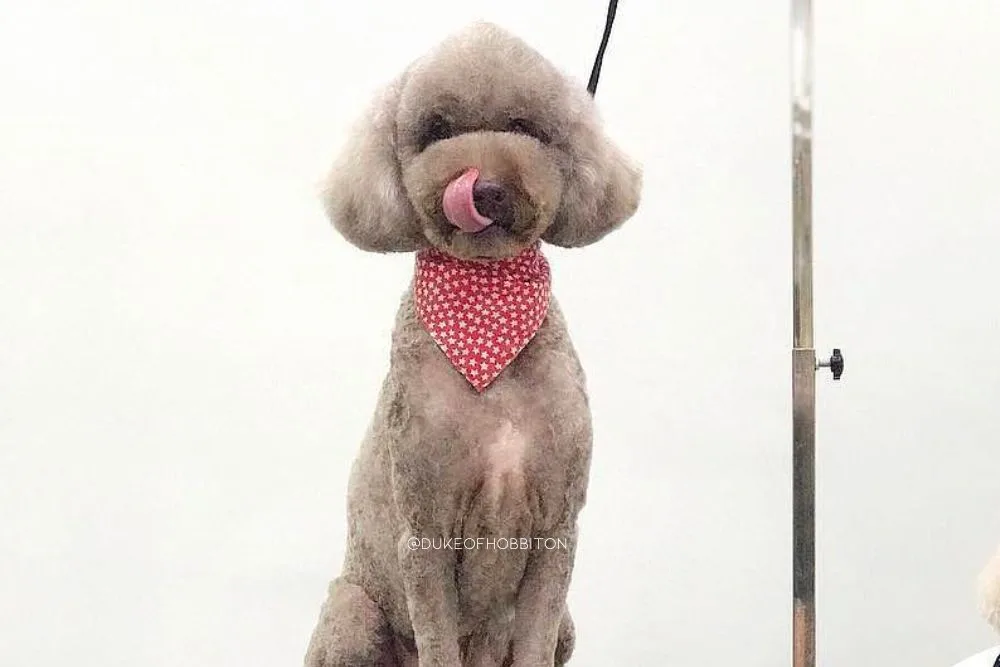
The cupcake cut is on the rarer side of the Poodle styles. The key is to cut the face of the dog closely while styling the ears in a fluffy way to resemble a cupcake.
While a much easier style than the gorgeous corded cut (that we will talk soon about) it’s still advised not to be done by amateurs.
Cutting around the dog’s face is a delicate method and should never be done by someone with little or no grooming experience.
9. Lamb Cut
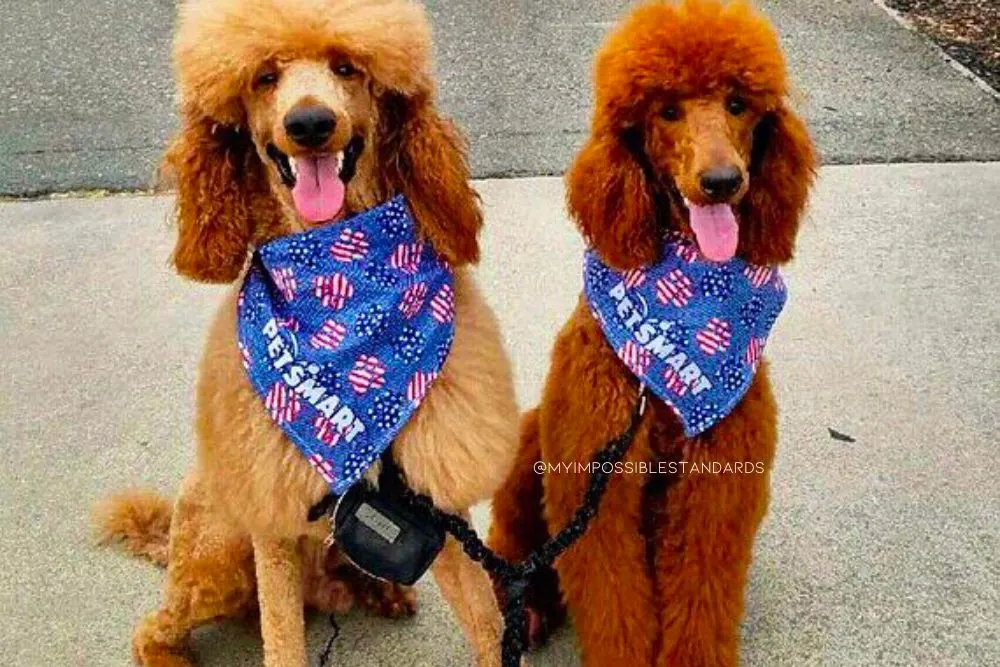
This poodle hairstyle is almost the same as the kennel cut.
The only difference is that the body coat length is not left for the owner to decide. The lamb cut requires that the coat be left longer.
If you want a cut that gives your dog a distinctive look but is also easy to maintain then the Lamb Cut is one of the best Poodle haircuts for you.
10. Bikini Cut
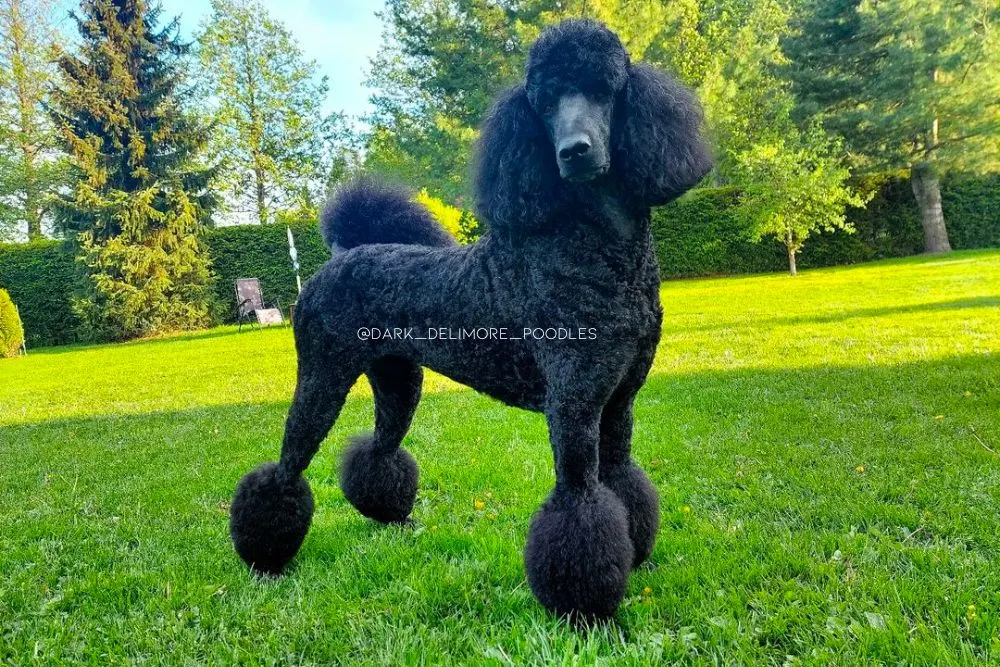
In this style, the base of the tail, face, and feet of the dog are all shaved closely to the skin. The legs are shaped into a pom pon starting just above the dog’s wrist and ending just above the feet.
The fur on the body of the Poodle is left fluffy and cut into shape. Again, the length of the fur is up to the owner but most chose a very short cut.
11. Dutch Cut
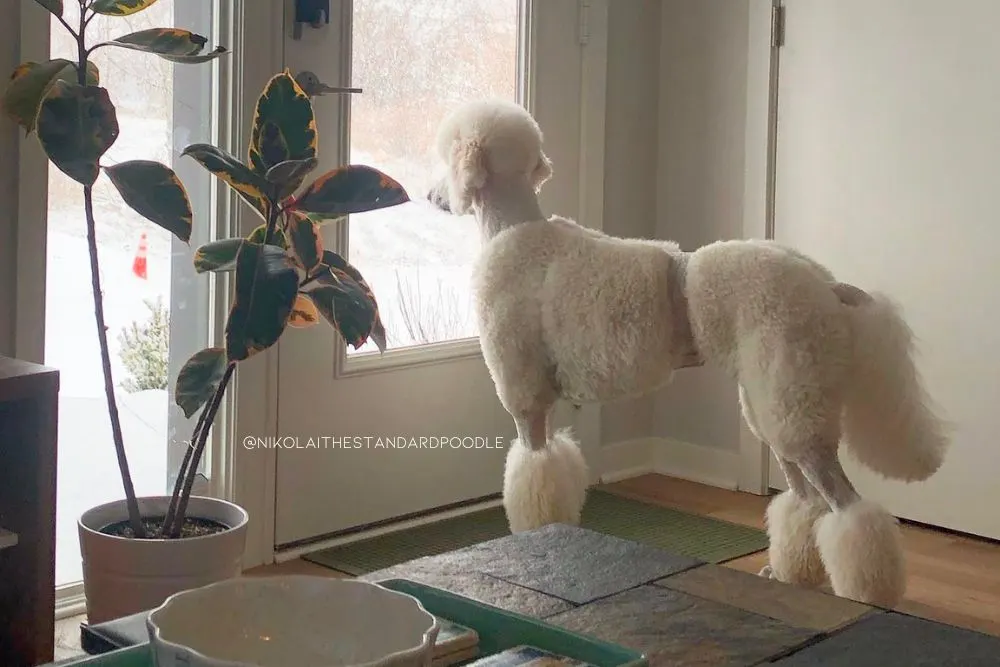
This is a fun pet cut. The face of the dog, as well as the belly band, neck area, feet, and the base of the tail, are all closely shaved. The belly part may be shaved wide or thin, depending on the owner’s preferences.
The lines along the spine and between hips are shaved as well and they should be very narrow. However, the tail, legs, and the top of the head are left very fluffy.
12. Royal Dutch Cut
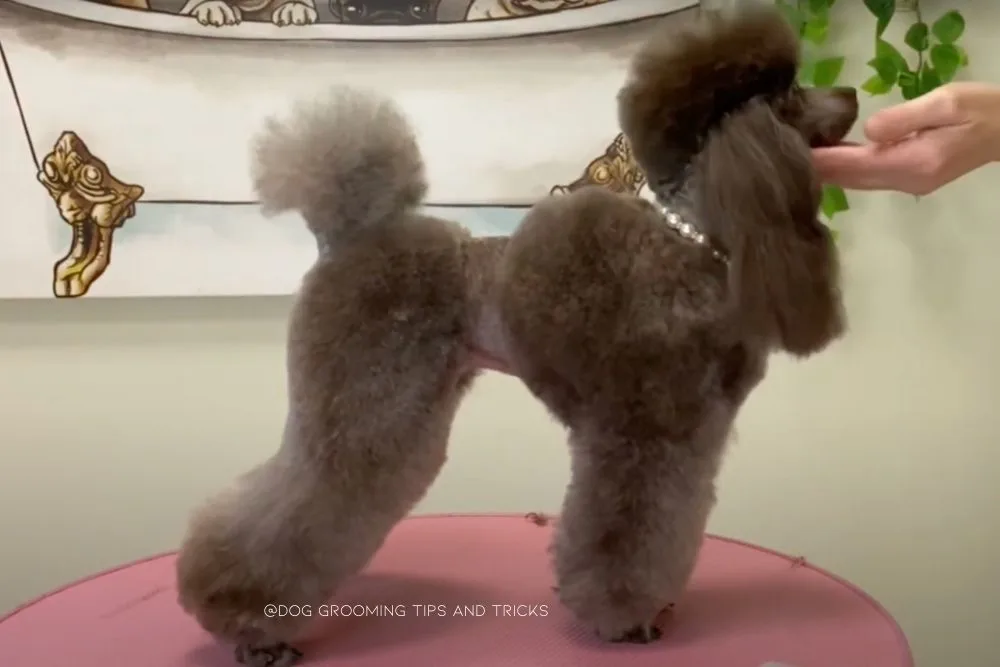
Often referred to as the banded dutch cut, the royal dutch cut stands out with its distinctive grooming technique.
In this style, your Poodle’s face, neck, and waist are shaved in a band-like pattern, while the remaining fur is shaped into a voluminous “poof” that adds a charming flair.
The unique baggy-like appearance of the Poodle’s fur in this cut is reminiscent of the traditional Dutch baggy pants, hence its name.
13. Teddy Bear Cut
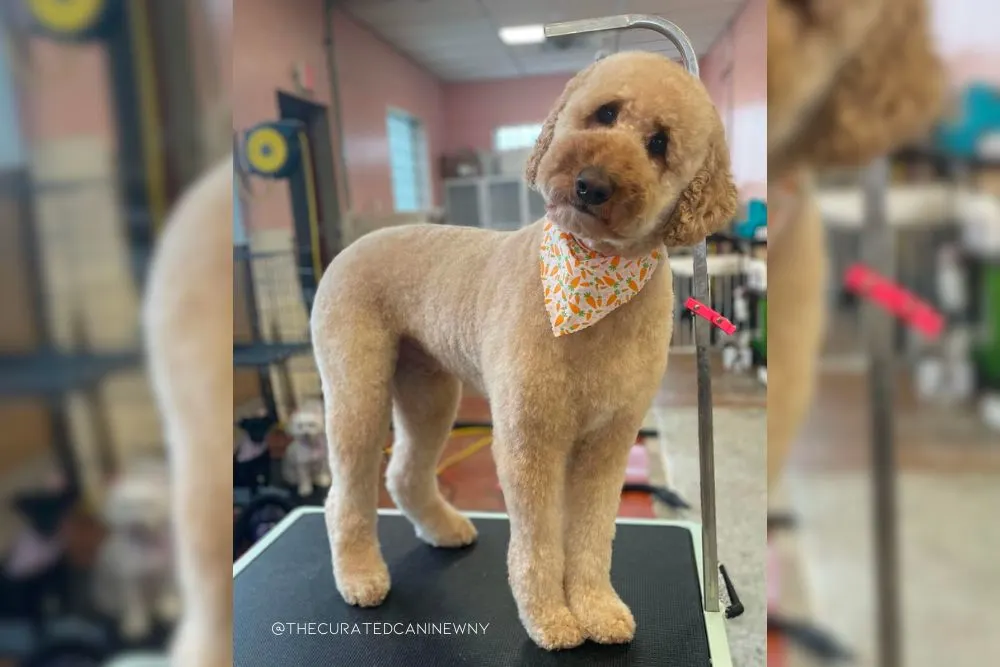
The teddy bear cut is almost completely the same as the puppy cut.
The only difference between these two styles is that the teddy bear cut requires the fur on the dog’s face to be longer than the hair on the body.
If you wonder why, that’s the key to this cut. The face fur needs to be long enough to style it to make it look as soft as a teddy bear’s. That’s where the name teddy bear cut comes from.
This cut is most often seen on younger and smaller Poodles because the bigger ones can’t necessarily pull off the adorable and small look.
Regardless, this is one of the easier poodle cuts to do.
14. Lion Cut

This might be one of the most popular cuts for this breed. This style takes advantage of the Poodle’s long curly coat to give them a mane-like appearance.
The top is left long while the fur on the sides and the back of the dog is trimmed short.
The legs are left hairless, with one pom pon around the tail and one on the front and back paws. This is a proper cut for all owners who do not like regular maintenance since the short fur will prevent tangles of the Poodle’s coat.
15. Princess Cut
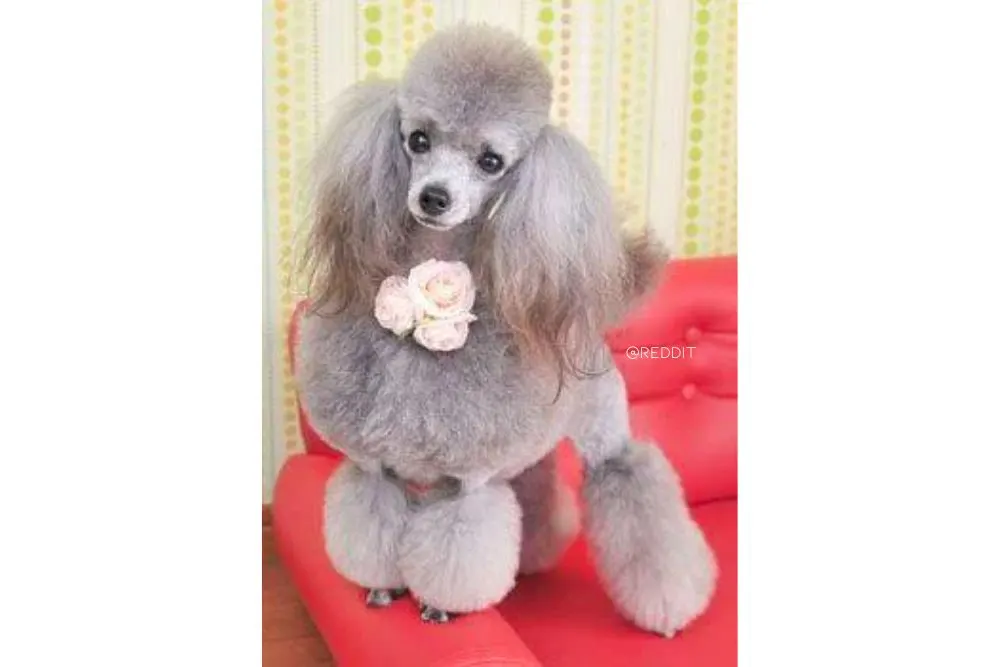
The princess cut highlights the face, using the ears to create a “human-like” haircut that stands out from the body.
The body is styled like a continental cut or dutch cut, making the princess cut a charming addition to your Poodle’s look.
16. Summer Cut
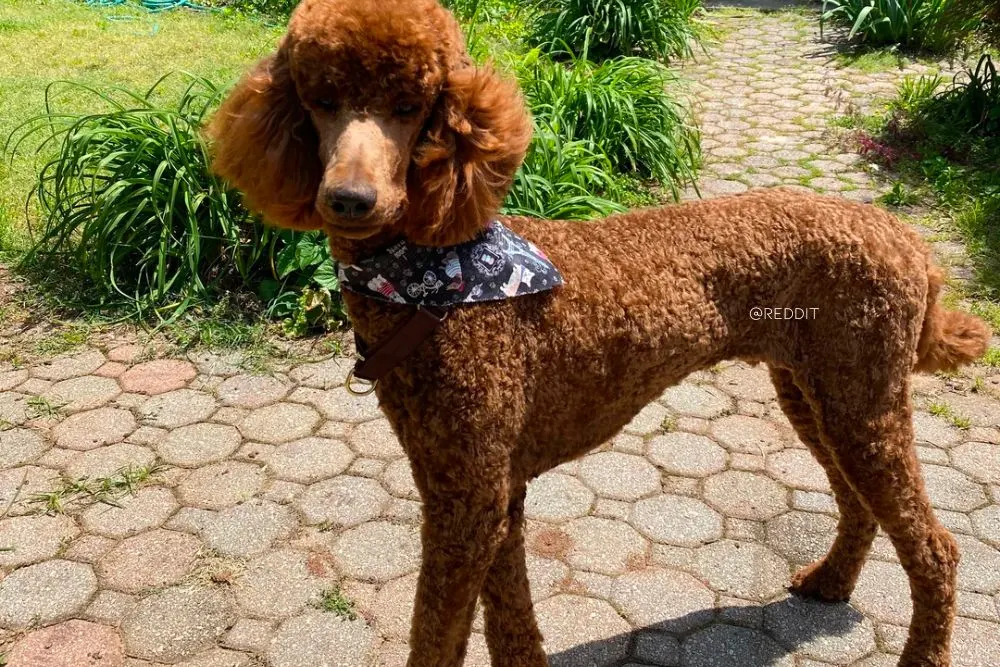
Unlike a winter cut, which leaves more hair for warmth, a summer cut, also referred to as a utility cut, involves keeping your Poodle’s hair as short as possible.
This serves to prevent overheating during hot weather, making it particularly practical for those residing in warmer climates.
This grooming approach prioritizes functionality over fashion, making it an ideal choice, especially for beginners in poodle grooming who seek simplicity and ease of maintenance.
17. Winter Cut
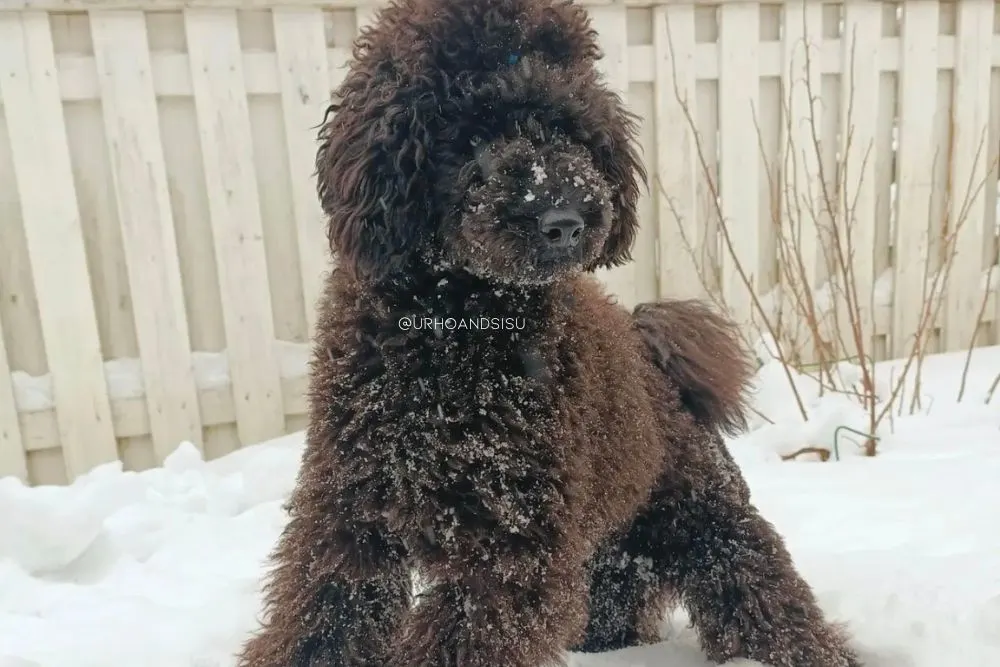
If you live somewhere where the winters are very cold and long then this is a cut made for you. It is easy and practical.
All it requires is that the dog has a long curly coat that is consistent across the body.
This cut is there to protect the dog against the harsh weather conditions.
Another great starter for anyone who is learning how to groom. As it’s not a show dog cut, it is not very hard to achieve. It needs only simple cutting and styling.
18. Corded Cut
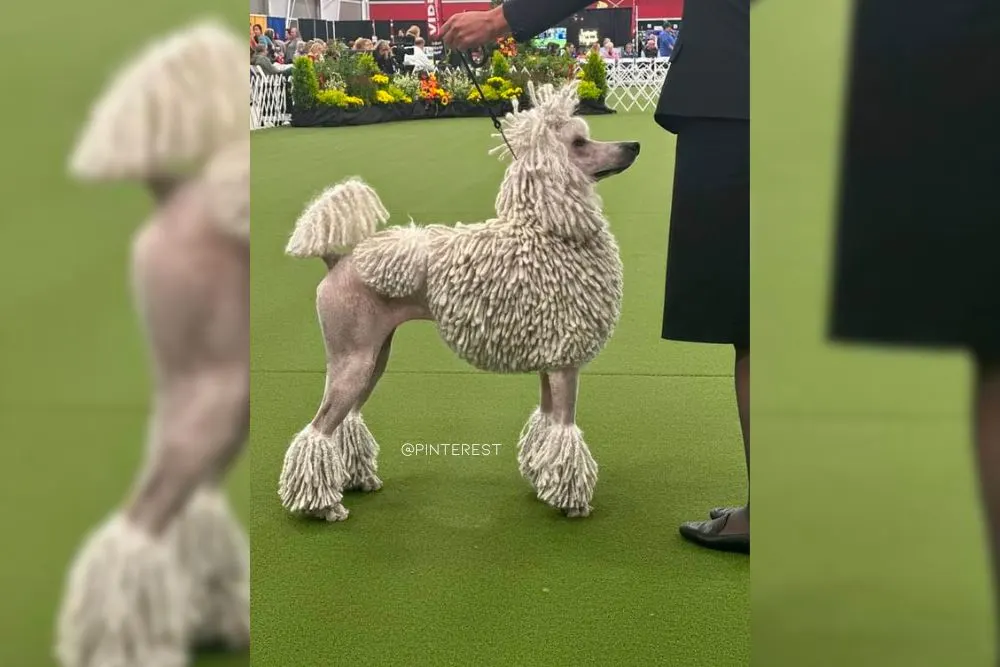
While most people can’t even connect Poodles and corded coats in their heads, some owners opt for this least common Poodle cut.
It is a fabulous choice that looks good in literally any Poodle color.
It’s very complicated to do and it requires the dog’s hair to be grown out and then dreadlocked. This was a very popular way to keep the dog’s coat a long time ago.
It’s not common to see in this day and age since most pet owners do not have the time to braid the fur.
This is an exceptionally difficult style to do and to maintain which keeps owners away even if the look is a desired one.
19. Town And Country Cut
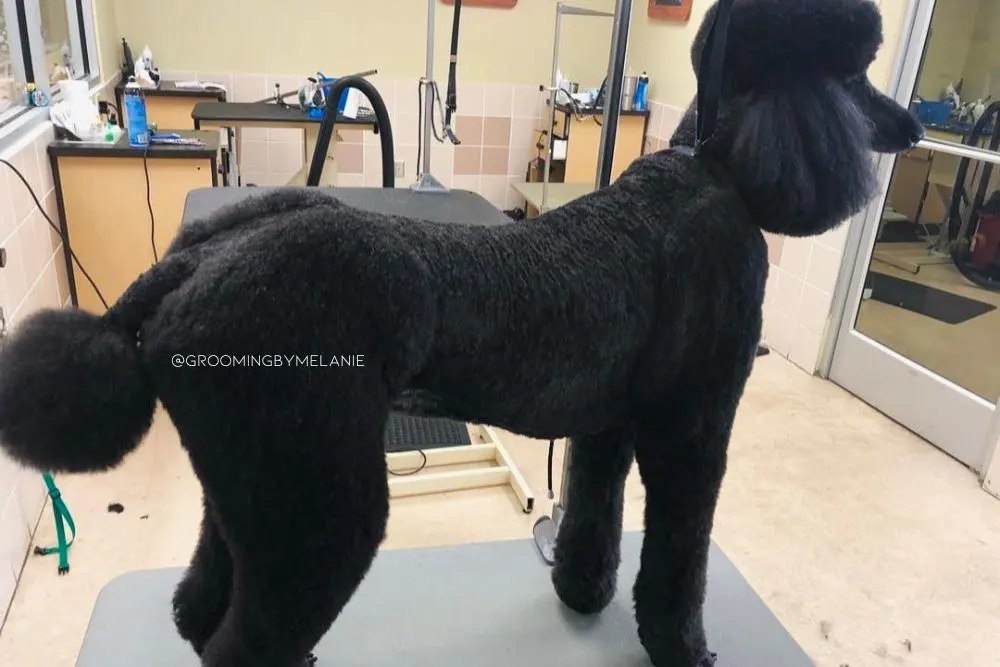
This is one of the more recognizable Poodle cuts. It’s very stylish, classy, and pretty to look at. It might even be easier to do than you think.
The key to this cut is to leave the dog’s body fur naturally looking as much as you can. This emphasizes the legs and the head of the dog.
This cut won’t make the cost of grooming skyrocket, and the dog will look adorable.
20. Royal Tail Cut
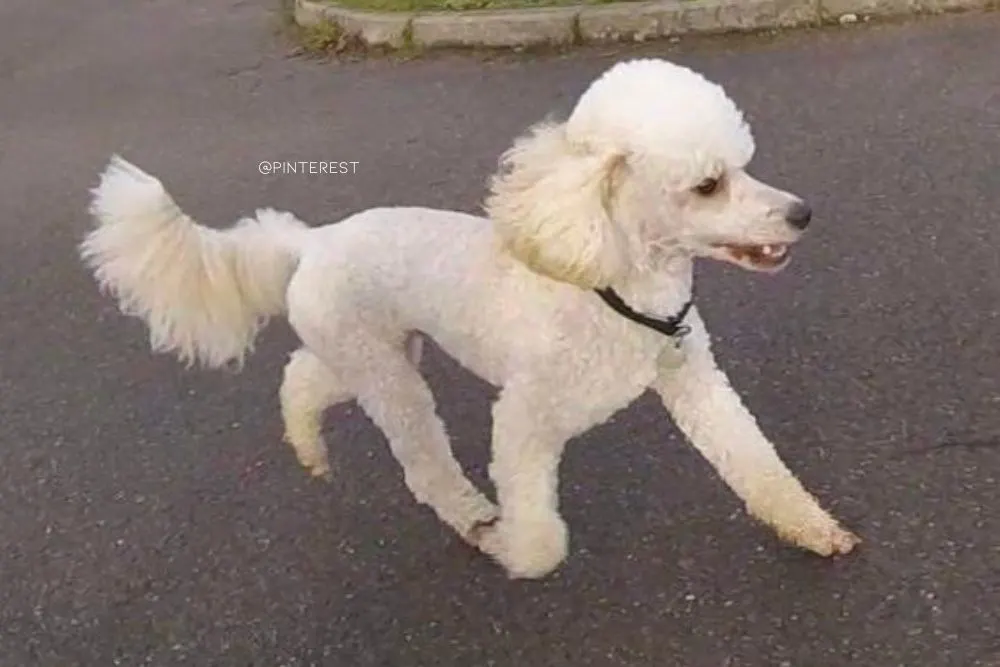
With a name like royal tail cut, you would expect some grooming of the tail to be involved. Well, you would be wrong. Everything but the dog’s hair on the tail is short.
This allows you to have fun with the tail and style it in a way that stands out.
This cut is more for the creative owners as it allows them to style the tail as anything within reason.
21. Modern Cut
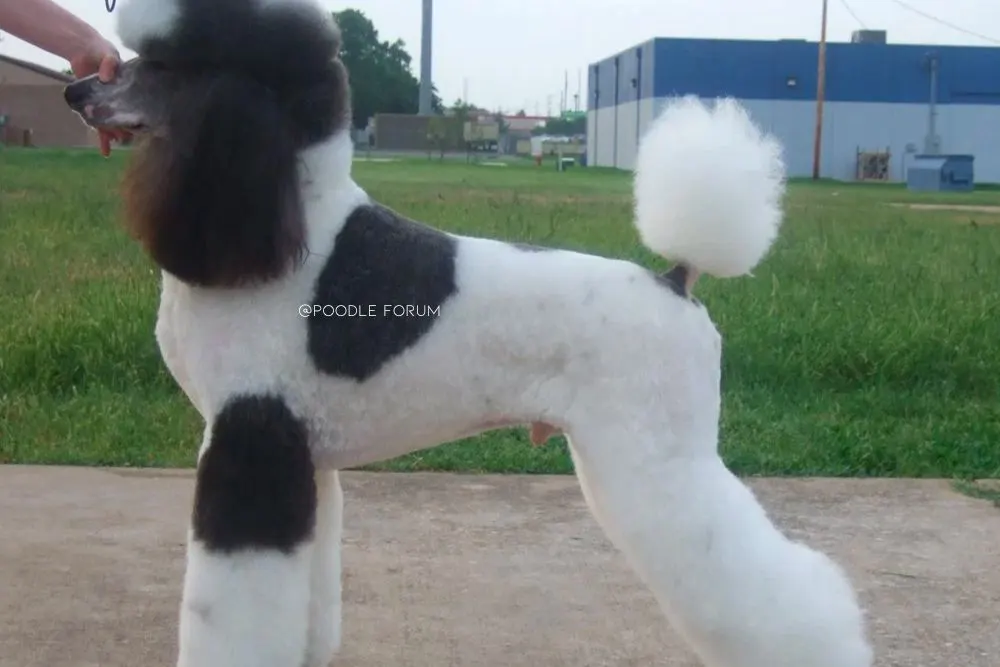
The modern clip is aimed towards poodle owners who like their dogs to look stylish but don’t enjoy the regular brushing. There are no hard and complicated grooming sessions involved.
The key in this cut is to accentuate the dog’s natural features.
The fact that the poodle can maintain the volume in its fur is a big plus for this cut. It makes the dog look elegant and regal.
22. The Fifth Avenue Cut
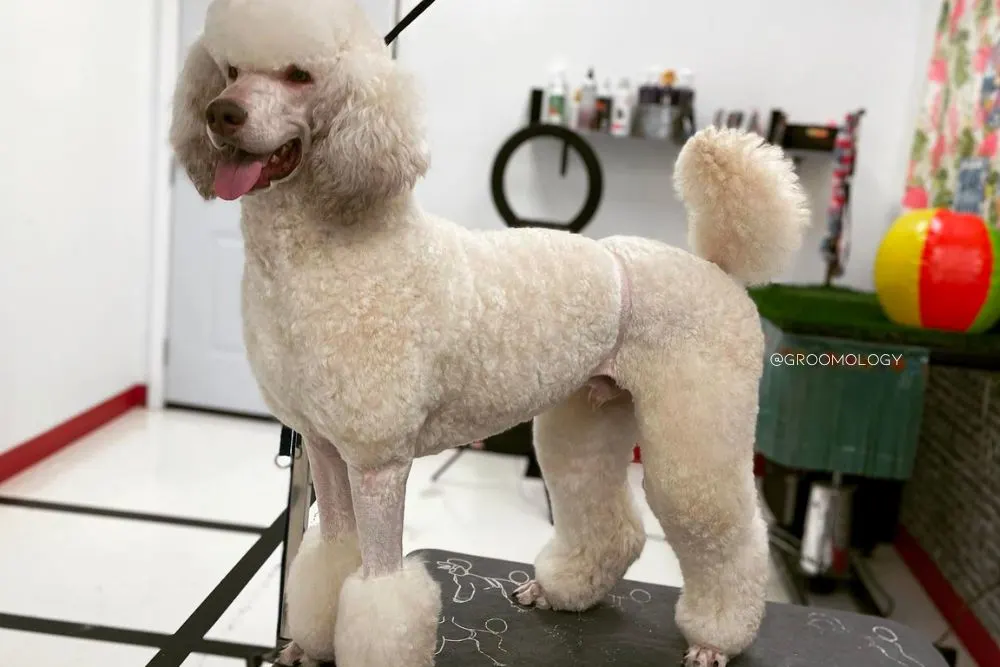
This style is not something you will typically see on a poodle, but it doesn’t make it any less elegant. It is quite similar to the already mentioned town and country cut.
But in the fifth avenue cut the dog’s front knees are shaved while the front feet are styled in a big “poof”.
The one other difference we can see is that the dog’s rear has shorter hair and the tail has a less noticeable “poof.”
The shaving of the waist is still obligatory, just with a narrower result.
23. German Cut
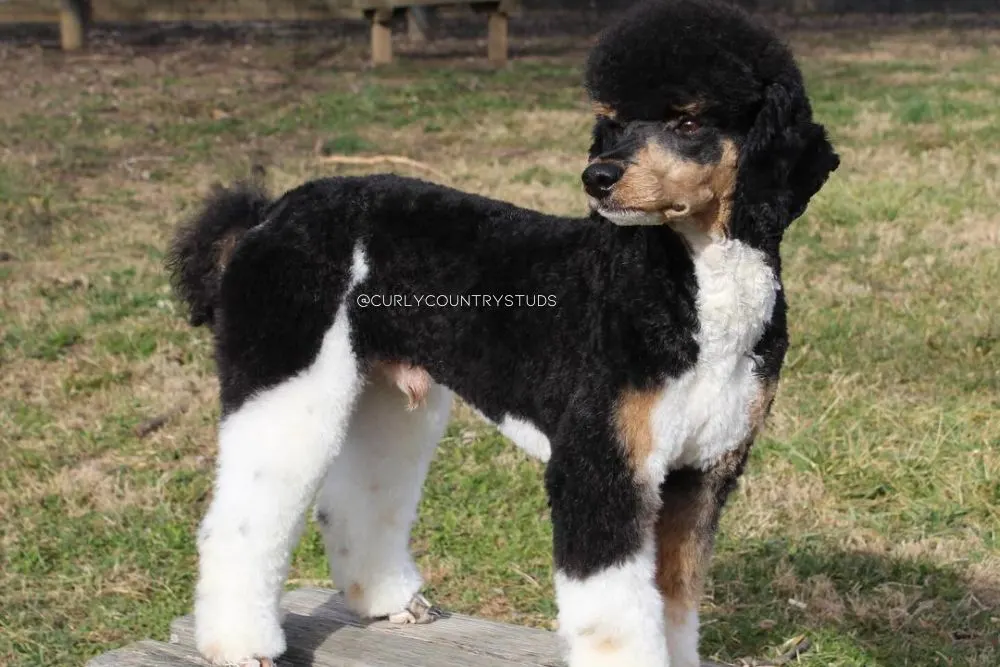
This style is very similar to the summer cut. In the German cut the tail and the neck of the dog are completely shaved.
It is a good choice for owners who love low maintenance cuts with unique spins.
24. Urban Cut
The urban cut closely resembles a modern cut, yet distinguishes itself with a key feature: the Poodle’s fur is kept short and shaped in a classic poodle fashion.
Unlike cuts favored in traditional dog shows, the urban cut is a popular choice in dog styling competitions, prized for its sophistication and simplicity in execution.
25. Bob Cut
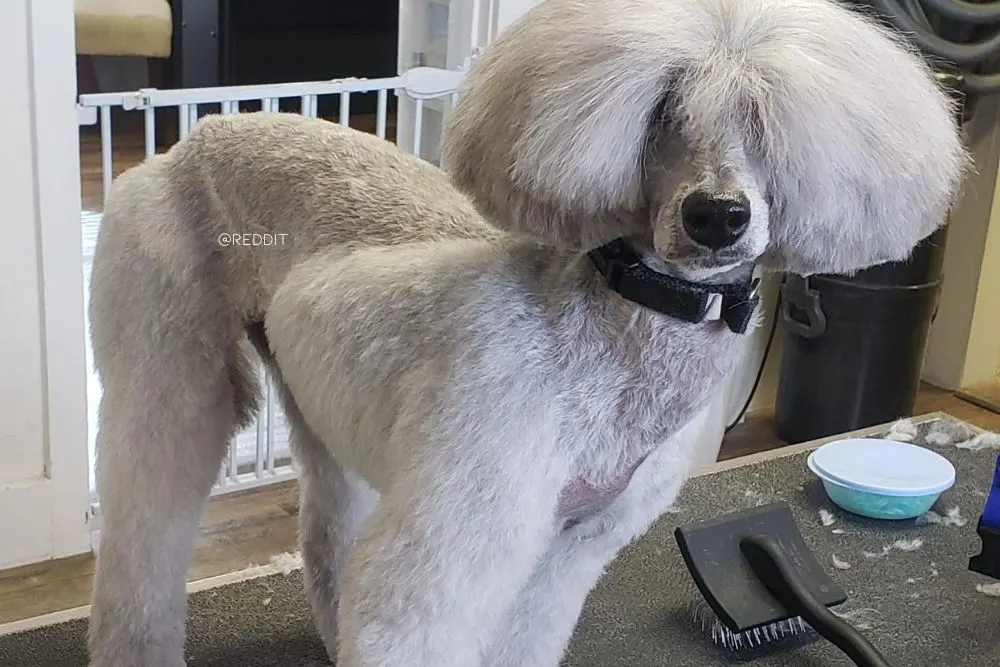
Similar to the already mentioned princess and cupcake cuts, the bob cut has its focus on the dog’s ears and head. The difference is in styling, where you should style the poodle head to resemble a bob haircut.
The trick to this cut is to have the dog’s fur on the head and ears reach the same length. This will allow later styling to a bob hairstyle.
26. Jacket And Pants Cut
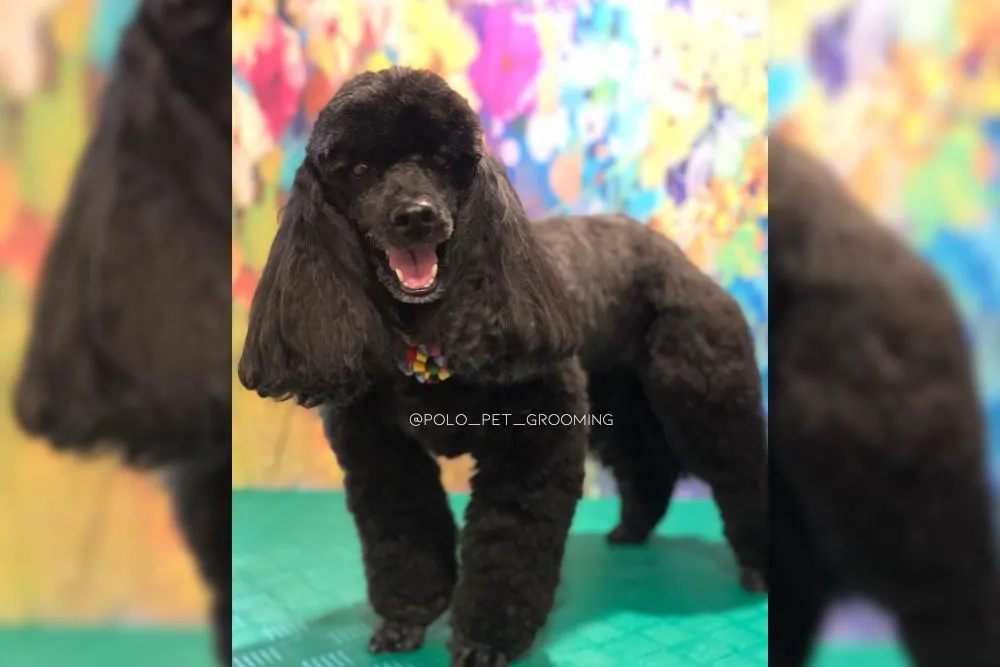
This is one of the more unique cuts for the Poodles. To achieve this look the dog’s neck and stomach are shaved at a uniform length, while the fur on the tail and legs is left to mimic pants and a jacket.
This style is not as popular because a lot of fur needs to be shaved off. However, it is a show-stopper and will get a lot of attention.
27. Bolero Cut
The bolero cut is a style that greatly resembles the already mentioned fifth avenue cut. The only difference between the two is that the bolero requires shaving both the front and the back legs of the dog.
Just like with the fifth avenue cut, a very common mistake that people make with the bolero cut is leaving too much hair on the dog’s body. Some even shave too thick of an area on the dog’s stomach.
Both those mistakes can have the Poodle style mistaken for the town and country cut.
28. Pony Cut
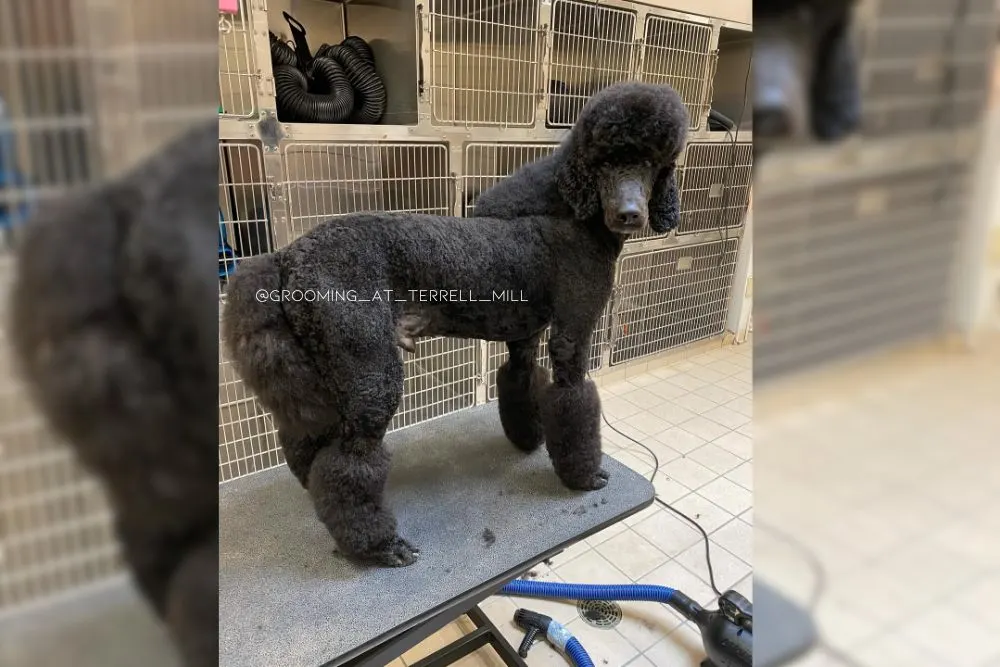
A cut that you probably haven’t seen, as it’s a less common style. The name kinda gives everything away.
To style the Poodle in this cut you need to cut the fur so it resembles a pony. That means the dog fur on the neck, tail, and feet is much longer than the hair on the rest of its body
Some owners like to go a step further and buy small rains or a saddle when styling their dog in this cut.
29. Tassel Cut
The tassel cut as in some previously mentioned styles focuses mainly on the ears of the dog. Almost the whole ear is shaved except the tips, making the dog’s ears look like tassels.
Usually, the rest of the fur is cut short into a simple design. The trick for this cut is to make sure the ears stand out, not the body of the dog.
In Conclusion
Many different breeds need a high level of maintenance when it comes to grooming. But the Poodle’s coat might be one of the most interesting to groom.
The Poodle’s needs differ from cut to cut, so it is important to find the right cut that suits the owner and the dog.
If you groom in your own time, some cuts might be a good option to try thanks to their entry-level difficulty. Here you can read some tips for grooming Standard Poodles from the American Kennel Club.
If this woke up your Poodle curiosity, you can read here about reputable and ethical Poodle breeders.
And if your slogan is “adopt don’t shop”, here are the best Poodle rescues you can trust.
Remember to adopt and shop responsibly.
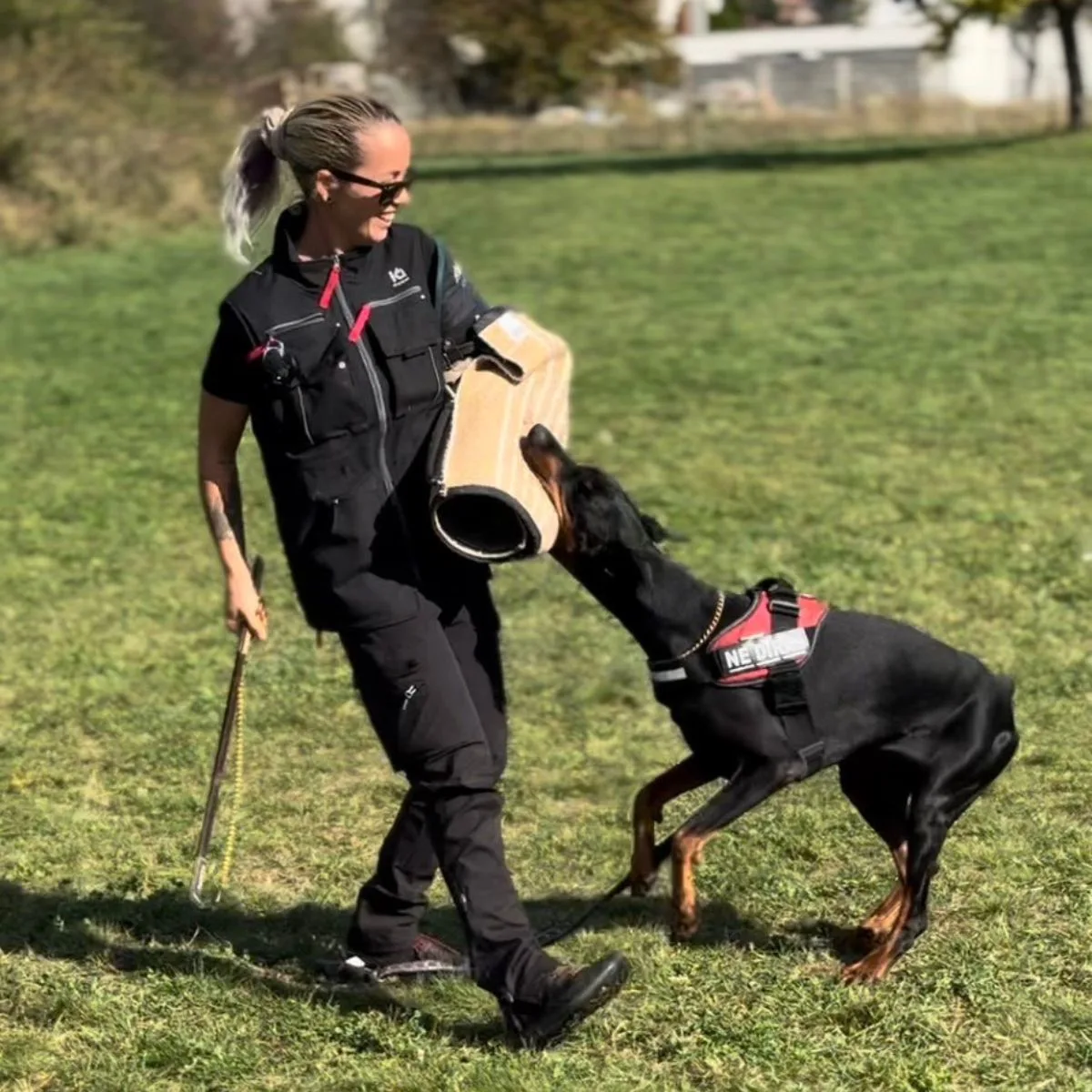
Nandina has been a lifelong dog owner and enthusiast. She shared her home with multiple breeds, including Giant Schnauzers, Cane Corsos, and Huskies. Currently, she is raising a three-year-old rescue and a working-line German Shepherd puppy.
Actively engaged in IGP dog sports for two years, Nandina is a certified instructor for basic obedience and socialization. She works as a trainer in her local dog sports club, and in her spare time, she handicrafts biothane gear for dogs.
